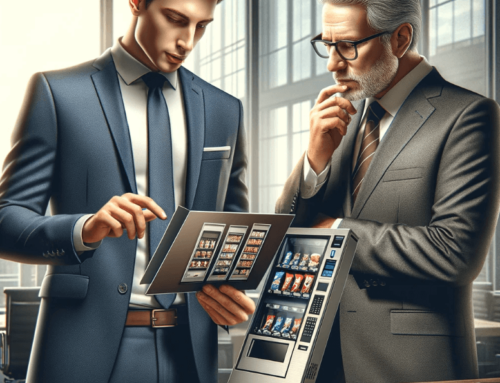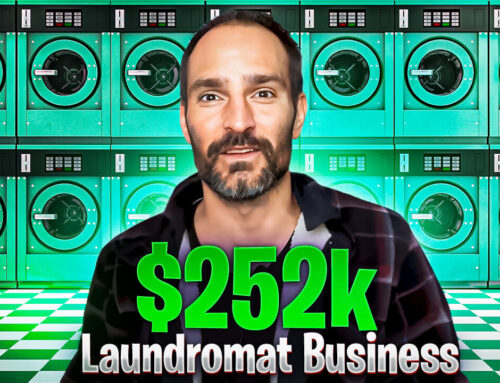
If you’re actually scouting out these places in person, either yourself or a colleague/employee do it, then it is quite mandatory that plenty of time is spent at each location, over a single duration or through multiple visits (this latter is preferable so as to get a better view during different days and times, as opposed to collecting all one’s data on a single circumstance). One can just as easily skip this step by relying on placement companies, searching for a place that has already collected such demographic and traffic information, or basing everything on pure assumption and estimation. But these will either cost money, impart risk of inaccurate information, or both. Whether any of that is a greater or lesser ‘cost’ than sacrificing your own time is up to your own opinions and calculations. But if you do end up setting yourself to personal scouting, here are the things practice.
Traffic Counting
The simplest and most vital concept to look into for gathering information on the expected income over time, basically just figuring out how many people actually come through and purchase from vending machines. It requires a good amount of vigilance, fast work with a clicker-counter, abacus, and/or notepad, and plenty of time, but the data from this is simply invaluable.
There’s little that needs saying for this. One simply needs to take note of 1: how many people, on average, travel through or take residence through the particular location during a certain time period/day/etc. And, more importantly, #2: how often and how many of these purchase from other residing vending machines (if there are any there), and how much is purchased. Taking this, you’ll need to further make a personal estimation of traffic and purchases throughout an extended period of time, from a whole day to a week, month, year, etc, making sure to consider changing traffic patterns depending on time of day, season, and other factors. This is why I certainly stress the idea of checking the place out through multiple periods as stated previously, to better estimate.
Once one gets an idea of overall traffic in their time period, they can use the information on how many purchased throughout the study as a percentage based on expected crowds. So if half of the people waiting inside a shop consistently got something from a machine, one can assume 50% of estimated people in throughout the year will look into your machine (as for how many of THOSE purchase from yours needs further looking into, calculation, and much dependence on your product to attract their interest in that environment to boost).
Pro Tip: You’ll find even more tips on finding that ideal location in this post at VendingHow.com.
Seeing Needs and Wants
After noting how MANY people come through and do or don’t buy from the machines (if there are any), we can focus on what’s actually getting selected. Which drinks and snacks are getting more attention, which are being ignored? Is there any food that people are bringing IN, or traveling to swiftly from the area (going to certain mall restaurants/booths), or otherwise seem popular and in demand in the area yet aren’t available via machine? Take a look at the actual machines there, is there any category missing that could be filled with a unique opportunity which your product could fill? Figure out these needs, and you’ll further figure out how likely people are to buy your product, and thus refine the sales number and percentage from the previous figures.
Survey Collecting

It helps to target different groups with different questions: talk to some people who you recently saw purchase something from a machine, asking why they chose that and what other foods they’d enjoy having in a place like that. Subsequently, one can discuss with other passersby if they frequent machines, and if the answer is yes move onto some more probing questions about interests, what would gain their attention, acceptable price points, etc.
Obviously just walking up to random people for this might not be the best method to go about; one wants comfortable and willing participants to gather information over. Besides a successfully-delivered introduction, one may want to consider having some samples of your product to tempt over. One can then use that to generate common opinions, see how many people enjoy and would actually be willing to purchase.
Profit Estimation
Now that data is collected, and you’ve figured out a predicted sales and gross income throughout a certain time period (suggested minimal 3-6 months, a yearly prediction is ideal), you can go about calculating whether it can make a profit and, more importantly, if it’s making enough to be WORTH it.

Then subtract Expected Variable Costs: gas, storage/transportation fees, repairs, replacing expired product, and other things that usually make you keep an extra $100 or so to the side every couple months to help cover.
If you still hold a profit at this point, then we’re on a good track; there are the chances and situations where you may NOT be, however, leaving you with one of two choices. Can either give up on this location and move to another, or find a way to adjust costs; usually adding an extra 20-50 cents to the asking price can cause a notably large effect on your earnings, and is usually small enough to not be a bother for the consumer. Then again, if possible, one could explore methods of reducing your other costs… but we won’t discuss that area of ‘study.’
With profit figured out, we can now tackle the final costs (debt costs); mainly the notably higher costs of the Machine itself and its Installation. Take that set cost and divide it by your final expected Profit-per-Month average. That will calculate how many months it takes to ‘break even’ before starting to officially make that much profit each month from that location.

For now, though, new vending machine owners can only focus on getting their heads down and learning from the start. You’ll get it soon enough. Here’s an additional resource you can use to find locations when just getting started.




